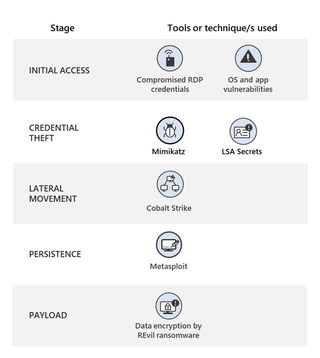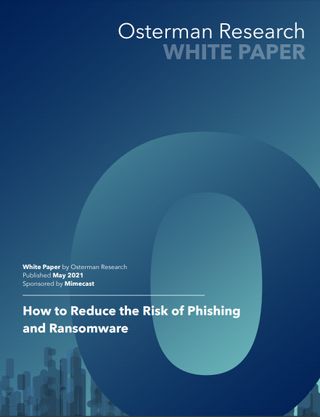Microsoft launches Secured-core servers to combat ransomware
Previously debuting on Windows PCs in 2019, the Secured-core initiative has reached servers in a bid to better protect infrastructure from cyber attacks like ransomware

Microsoft has expanded its Secured-core PC initiative to its server products in a bid to combat ransomware attacks on infrastructure.
Secured-core will now be expanded to reach Windows Server, Microsoft Azure Stack HCI, and Azure-certified IoT devices.
Businesses can search for Secured-core servers in the Azure Stack HCI and Windows Server online catalogues. There are currently four all-HPE products that run Azure Stack HCI and 42 options from a variety of vendors that meet the Windows Server spec.
All servers come “fully equipped with industry-leading security mitigations built into the hardware, firmware, and the operating system to help thwart some of the most advanced attack vectors,” Microsoft said.
Secured-core servers are built around three distinct security pillars:
- To protect the server infrastructure with a hardware-based root of trust
- To defend sensitive workloads against firmware-level attacks
- To prevent access and the execution of unverified code on the systems
“Partnering with leading original equipment manufacturers (OEMs) and silicon vendors, Secured-core servers use industry-standard hardware-based root of trust coupled with security capabilities built into today’s modern central processing units (CPUs),” said Microsoft in a blog post.
“Secured-core servers use the Trusted Platform Module 2.0 and Secure boot to ensure that only trusted components load in the boot path.”
Get the ITPro. daily newsletter
Receive our latest news, industry updates, featured resources and more. Sign up today to receive our FREE report on AI cyber crime & security - newly updated for 2024.
It’s thought the new hardware will help tackle specific parts of ransomware attacks and help detect intrusions earlier, with the hope that attacks can be mitigated before any real damage is done.
Microsoft used a typical REvil ransomware kill chain as an example. REvil was one of the most prolific ransomware gangs of 2021 before it shuttered following a string of arrests of alleged REvil associates.

Using the kill chain used by REvil on Kaseya earlier this year, Microsoft explained that certain features in Secured-core servers like Hypervisor-protected Code Integrity (HVCI) can block drivers that tamper with the kernel, like with Mimikatz, via a code integrity security policy.
By preventing credential theft, an early stage of the ransomware kill chain, Microsoft said Secured-core server can make it very difficult for attackers to move laterally around a potential victim’s network.

How to reduce the risk of phishing and ransomware
Top security concerns and tips for mitigation
“Continuing to raise the security bar for critical infrastructure against attackers makes it easier for organisations to meet that higher bar, which is an important priority for both customers and Microsoft,” said Microsoft.
“Successfully protecting systems requires a holistic approach that builds security from the chip to the cloud across hardware, firmware, and the operating system.”
Microsoft debuted the Secured-core initiative in 2019 on Windows PCs which saw computers ship with enhanced security measures at the hardware level.
The machines were designed for business use, with the financial services and healthcare industries targeted specifically, as well as anyone working in a high-value-data role such as in government.

Connor Jones has been at the forefront of global cyber security news coverage for the past few years, breaking developments on major stories such as LockBit’s ransomware attack on Royal Mail International, and many others. He has also made sporadic appearances on the ITPro Podcast discussing topics from home desk setups all the way to hacking systems using prosthetic limbs. He has a master’s degree in Magazine Journalism from the University of Sheffield, and has previously written for the likes of Red Bull Esports and UNILAD tech during his career that started in 2015.




